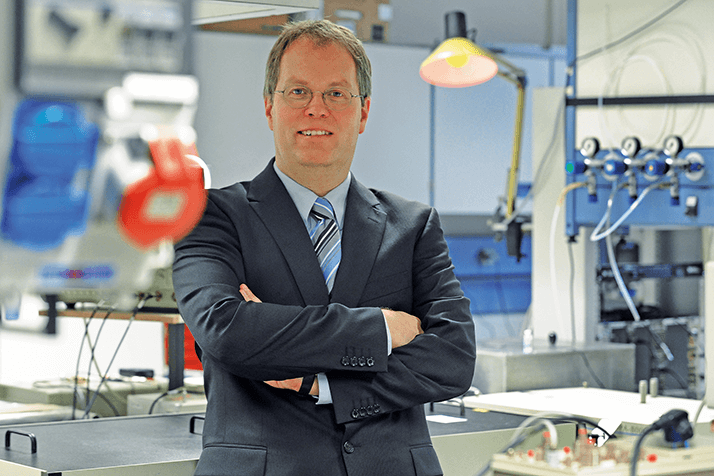
Can you tell us a little about BAM? BAM is similar to the chemistry and engineering arm of NIST in the US in a way. It’s a very interesting organization that combines chemists, biologists, engineers, and material scientists from many different areas, all striving for safety in chemistry and technology – a topic of importance for the whole country (and one not to be left entirely in the hands of market forces). The very interdisciplinary nature of BAM was one of my main motivations for taking over leadership – after all, analytical science is very interdisciplinary by nature.
Tell us about your time at the European Environment Institute of the Joint Research Centre in Ispra, Italy. I joined to help set up a spectroscopy lab for atmospheric chemistry research with Nicolo Omenetto, one of the group leaders at the time. Nicolo invited me while I was at the Technical University Munich – I liked him a lot and there was money for research, so I grasped the opportunity! Moreover, in the mid-1990s, atmospheric chemistry was at the heart of a lot of discussions about global climate change. People were interested in measuring online and in situ changes in gas concentrations – with aerosols a particular focus. We wanted to harness Nico’s previous work on atomic spectroscopy to solve the problem of quantitative online analysis of these tricky compounds. It was an international atmosphere and a very interesting and positive experience for me. What got you excited about analytical chemistry? I realized early on that analytical chemistry is at the core of many fundamental and applied fields. I was fascinated by our need to know “what is it?” and “how much?” I guess that’s the way I view the natural world around me. I also like that, as an analytical scientist, applications can be hugely diverse. One moment you might be doing process analysis, and then you could switch to water analysis; however, it is always applied – and it’s the problem-solving aspect that I really enjoy. I started at the University of Dortmund, which had a strong analytical science department that excelled in fascinating teaching – I think that was my original inspiration. Now, one of the core Humboldtian philosophies reflects my own driving force: “The curious individual observes nature through accurate measurement”.
What’s special about Humboldt University? Apart from its own deep educational heritage, what I love about Humboldt is its campus in Adlershof, which has a long analytical science tradition. In fact, we have an initiative called the “Analytic City Adlershof”, which acts as a central base for many small instrument development companies; the BAM department of analytical chemistry makes its home there as well. Furthermore, we have the only graduate school in the German “Excellence Initiative” program – the School of Analytical Sciences Adlershof – or SALSA for short. I think such a heavy emphasis on analytical science is pretty unique these days. The philosophy at Humboldt is to teach and perform research simultaneously – an ideal that Wilhelm von Humboldt injected into the German education system more than 200 years ago. I think that it’s important to recognize that teaching can be as important as research in terms of generating new ideas.
How does SALSA fit into that ideal? SALSA has two goals. The first, overarching scientific objective is to address the very fragmented nature of the analytical sciences; although it is used everywhere, many people believe that it is not a science in and of itself – that’s a view we definitely want to change. In essence, we want to bring about a fundamental renaissance in analytical science to define it as a distinct discipline. The second goal is to ensure that our graduates receive an excellent education with a focus on case-based learning. After all, analytical science is not simply a collection of instruments; rather it is the ability to solve complex problems, with ‘the sample’ at its core. We want SALSA to be an iconic institution that gives the analytical sciences a new spirit, driving excellence through education and research, as good old Humboldt would have liked.
What are the main challenges of the near future? I think the biggest challenge will stem from the need to not only quantitatively measure many analytes in very small amounts, but also to understand the dynamics (in time or space) of the system under scrutiny. That’s where we need to be heading.




